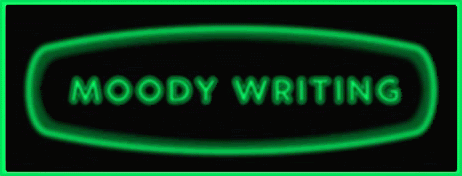In the last post I took a look at making it clear what was behind a character’s
actions and suggested that in most cases it's preferable to just tell the
reader what's going on up front.
In this follow up I will attempt to clarify how and when to use
telling to get the most out of a scene. As with any technique, a lot still
depends on how well you execute it, but knowing the advantages and
disadvantages should help.
For the purposes of this, the example I’ll be using will be a man
breaking into a house.
There are three ways to do this in terms of character motivation.
1. I don’t tell you why he’s breaking into the house and either let
you figure it out for yourself or reveal his reasons after the fact.
2. I show you in a previous
scene why he needs to get into this house.
3. I tell you his reasons as
he breaks in or just before.
1. Jerry squeezed through the
window and dropped to the floor. He crouched, frozen, listening for any sounds.
In terms of making it clear what going on, you can do that very easily
simply by relating what he does as he does it. There should be no confusion
about the fact he’s in a place he shouldn’t be, that he’s worried about getting
caught, and establishing tension should be pretty straightforward.
The way he acts, the care he takes to not get caught, will create
suspense and drama and draw the reader into the story.
But how long will the reader wait to find out what he’s up to? And
what does the writer gain in making them wait?
2. “I swear on
my life,” said Miranda. “I left your mother’s ring on the bedside table the day
we broke up. I don’t have it.”
Jerry nodded
his head. “You’re a lying bitch, Miranda.”
In order to show Jerry’s reason for house breaking
you would need to go back in time (either through flashback or by starting the
story earlier). This requires extra work.
You obviously want any scene you write to be dramatic and interesting, and you
have to make a judgement about whether it’s going to be worth it.
You will be affecting the pace and entry point, and
you may also be opening the door on a bunch of other reasons and motivations.
If you’re going to show all motivations, where will it end?
And another issue is that it’s only possible to show
fairly simple motivation. Anger or guilt or jealousy can be dramatised quite
easily. Anything more complex or subtle isn’t quite so straightforward.
If Jerry’s breaking into his ex-faincee’s house to
get back the engagement ring she claims she no longer has, and the reason it’s
important to him is that he suspected she cheated on him but he could never
prove it and if he finds the ring in her house, that would prove she was a liar
and so indirectly prove him right for dumping her... how would you show that?
3. Jerry stood in Miranda’s bedroom and
thought, If I was a lying, conniving bitch, where would I hide an engagement ring
that didn’t belong to me?
How much info I choose to give the reader, and what
tone I use (Jerry is apparently still quite upset with Miranda) is a matter of
personal preference. But the question I would pose is this: does informing the
reader about the character’s motivations take away from the reader’s curiosity
about what happens next?
Because often the reason writers decide it is worth
allowing the reader to be confused is because of the extra sense of intrigue it
produces. But in truth, as long as the character’s reasons are valid, they won’t
be any more interesting by revealing them later.
If you found this post useful, please give it a retweet. Cheers.








































































































16 comments:
Showing in a previous scene works if you've already set it up as the natural flow of the story. After talking with Miranda, he could think to himself that he just might break in and search for the ring.
This second post helped me get the first one further. I am going to practice it in my WiP for a better grasp.
@Alex - absolutely. if it works in the flow of your story, no probs. If you have to force it in to explain what's going on you should just make sure it isn't doing more harm than good.
@Al D - Doing my best to be clear.
There is definitely a place for telling and, of course, showing. It's just a matter of finding the right place.
I've noticed things like this when reading books by other people, but I've never really put much thought into it when writing anything. Its certainly something that I should pay more attention to starting now and in any re-writes, which I know will come up at some point.
@Lynda - I think a lot of aspiring writers once they're aware of the advantages of showing, try to apply everywhere, which can slow things down a bit.
@Rachel - It's always easier to see these things in someone else's writing.
I like your examples, especially since the author's intent will help decide which one fits the best. If tension is what you're going for, that first one had me sitting up and paying attention. :)
I need to try this with my WIP. Thanks Mooderino.
@Donna - Yes, but it also requires the pay off to live up to billing, which is where it often disappoints.
@Rachna - YVW!
Great post! I just gave it a Tweet.
you make an excellent point - and sometimes when the reader knows something in advance it can make the scene more interesting/tense rather than less.
@Stephen - cheers.
@mshatch - and sometimes getting the info across quickly and directly makes the rest of the scene more engaging.
Great advice, Moody.
@Michael - cheers.
I think, I got a shade of light when it comes to narration of events with your example... Cheers!